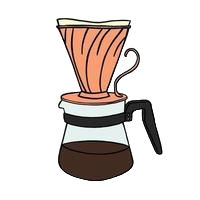This week’s accomplishments
- Attended mandatory labs
- Demonstrated my portion of the project to Prof. Fedder and the TAs, received positive feedback
- Added a manual taring feature the user can trigger at any time to zero the scale
- Completed the Arduino’s script for the temperature probe, scale, heater, and PID loop
- sends serial data from the temperature probe and scale
- sends a confirmation signal back to the rpi that the change it requested from the PID loop was implemented
- receives serial input
- user can send a signal to manually tare the scale
- receives signals from the rpi-implemented PID loop and turns the water heater on and off wrt to the signal’s value
- Began testing the PID loop to control the heating element
- Very close to being fully implemented
- currently, the loop overshoots the target temperature by around 2-3 degrees Fahrenheit
- Very close to being fully implemented
Next weeks plan
- Implement the pump into the project.
- will need to ensure the pump’s flow rate are accurate per the user’s request
- see testing plan below
- will need to ensure the pump’s flow rate are accurate per the user’s request
- Finish testing and verifying the PID loop for the heating element
- see testing plan below
- begin fabricating all of the different components on to the 3-D printer’s frame
- will need to 3-D print a mount for the water pump. Will be placed on the very top of the frame.
Status Report: On schedule
Verification and Validation
- Verification:
- Heating element: As per the design project report, we aim to deliver water within +-5 degrees Fahrenheit of what the user specifies. Mentioned above, we are currently overshooting the temperature by only a couple of degrees. However, this may be necessary due to thermal loss whilst the water travels through the lines, as this temperature reading was taken inside the water heater.
- TEST
- Need to test the FULL range of temperatures the user can request (from around 180 – 212 degrees Fahrenheit)
- Every 4 degrees (180, 184, … 212), will ensure that the temperature of the water hits the coffee grounds at +-5 degrees from the users request (although we will shoot for +-3 degrees)
- Need to test the FULL range of temperatures the user can request (from around 180 – 212 degrees Fahrenheit)
- TEST
- Scale
- Testing will be simple. The user will be using the integrated scale to check the amount of coffee grounds they have placed into the filter
- TEST
- Need to test the full range of weights of coffee grounds the user may use (around 10 – 40 grams of coffee grounds)
- Every 5 grams, use a known weight to ensure the weight readings are accurate
- Need to test the full range of weights of coffee grounds the user may use (around 10 – 40 grams of coffee grounds)
- TEST
- Testing will be simple. The user will be using the integrated scale to check the amount of coffee grounds they have placed into the filter
- Heating element: As per the design project report, we aim to deliver water within +-5 degrees Fahrenheit of what the user specifies. Mentioned above, we are currently overshooting the temperature by only a couple of degrees. However, this may be necessary due to thermal loss whilst the water travels through the lines, as this temperature reading was taken inside the water heater.
- Validation
- The water system needs to be safe and intuitive for the user. Whilst the software side is being handled by Rio, I will need to make sure that user can easily and SAFELY handle the water system. I will need to ensure that there are no exposed wires or electronics that could be exposed and damaged if some water is spilled around our machine.
- As of now, the user will need to unscrew the cap of the water heater (which is a converted electric kettle), which will have the temperature probe and tubing attached to this.
- TEST:
- I will ask several individuals to screw and unscrew the lid to ensure ease of use and durability of system.
- TEST:
- Cable management is a major component of this as well. I will need to make sure that no wires could jar loose or come exposed.
- As of now, the user will need to unscrew the cap of the water heater (which is a converted electric kettle), which will have the temperature probe and tubing attached to this.
- The water system needs to be safe and intuitive for the user. Whilst the software side is being handled by Rio, I will need to make sure that user can easily and SAFELY handle the water system. I will need to ensure that there are no exposed wires or electronics that could be exposed and damaged if some water is spilled around our machine.

